Serve Ball Trajectory Characteristics of Different Volleyballs and Their Causes
Abstract
1. Introduction
2. Method
2.1. Drag Force Measurement in Wind Tunnel
2.2. Ejection Experiment
3. Result and Discussion
3.1. Drag Force Measurement in Wind Tunnel
3.2. Ejection Experiment
4. Conclusions
- From the measurement of the drag coefficient in the wind tunnel, the velocity region where the drag crisis occurred shifted to the low Reynolds number side in the order of FLISTATEC, MVA200, and V200W. This trend was consistent with previous studies;
- In the ejection experiment, the flight distance of the ball increased in the order of MVA200, V200W, and FLISTATEC. This trend was correlated with the magnitude of the drag coefficient measured in the wind tunnel. The magnitude of the drag force and the Reynolds number where the drag crisis occurs differ depending on the type of ball and orientation of the panel, and the flight distance also changes;
- The variation in the drop point was different depending on the type of ball and panel. There was a possibility to suggest an appropriate receiver position from the distribution of the variation;
- The same trend was obtained for the difference of distance between the ejection machine and human serve. In the case of human serve, the drop point could be controlled by paying attention to the direction of the panel.
Author Contributions
Funding
Informed Consent Statement
Conflicts of Interest
References
- Zetou, E.; Tsigilis, N.; Moustakidis, A.; Komninakidou, A. Playing characteristics of men’s Olympic Volleyball teams in complex II. Int. J. Perform. Anal. Sport 2006, 6, 172–177. [Google Scholar] [CrossRef]
- Fernandez-Echeverria, C.; Gil, A.; Moreno, A.; Claver, F.; Moreno, M.P. Analysis of the variables that predict serve efficacy in young volleyball players. Int. J. Perform. Anal. Sport 2015, 15, 172–186. [Google Scholar] [CrossRef]
- Taneda, S. Visual observations of the flow past a sphere at Reynolds numbers between 104 and 106. J. Fluid Mech. 1978, 85, 187–192. [Google Scholar] [CrossRef]
- Hiratsuka, M.; Ito, S.; Miyasaka, K.; Konno, A. Stereo three-dimensional particle image velocimetry measurement and aerodynamic force analysis of non-spinning soccer balls. Proc. Inst. Mech. Eng. Part P J. Sports Eng. Technol. 2020, 234, 146–153. [Google Scholar] [CrossRef]
- Asai, T.; Ito, S.; Seo, K.; Hitotsubashi, A. Fundamental aerodynamics of a new volleyball. Sports Technol. 2010, 3, 235–239. [Google Scholar] [CrossRef]
- Asai, T.; Ito, S.; Seo, K.; Hitotsubashi, A. Aerodynamics of a new volleyball. Procedia Eng. 2010, 2, 2493–2498. [Google Scholar] [CrossRef][Green Version]
- Hong, S.; Asai, T.; Weon, B.M. Surface Patterns for Drag Modification in Volleyballs. Appl. Sci. 2019, 9, 4007. [Google Scholar] [CrossRef]
- Coleman, S.; Benham, A.; Northcott, S. A three-dimensional cinematographical analysis of the volleyball spike. J. Sports Sci. 1993, 11, 295–302. [Google Scholar] [CrossRef]
- Jalilian, P.; Kreun, P.K.; Makhmalbaf, M.M.; Liou, W.W. Computational aerodynamics of baseball, soccer ball and volleyball. Am. J. Sports Sci. 2014, 2, 115–121. [Google Scholar] [CrossRef]
- Kao, S.S.; Sellens, R.W.; Stevenson, J.M. A Mathematical Model for the Trajectory of a Spiked Volleyball and its Coaching Application. J. Appl. Biomech. 1994, 10, 95–109. [Google Scholar] [CrossRef][Green Version]
- Hong, S.; Ozaki, H.; Watanabe, K.; Asai, T. Aerodynamic Characteristics of New Volleyball for the 2020 Tokyo Olympics. Appl. Sci. 2020, 10, 3256. [Google Scholar] [CrossRef]
- Cho, A. ENGINEERING OF SPORT MEETING: In Volleyball, Crafty Players Serve Up an Aerodynamic Crisis. Science 2004, 306, 42a. [Google Scholar] [CrossRef]
- Frohlich, C. Aerodynamic drag crisis and its possible effect on the flight of baseballs. Am. J. Phys. 1984, 52, 325–334. [Google Scholar] [CrossRef]
- Asai, T.; Akatsuka, T.; Haake, S. The physics of football. Phys. World 1998, 11, 25–28. [Google Scholar] [CrossRef]
- Naito, K.; Hong, S.; Koido, M.; Nakayama, M.; Sakamoto, K.; Asai, T. Effect of seam characteristics on critical Reynolds number in footballs. Mech. Eng. J. 2018, 5, 17-00369. [Google Scholar] [CrossRef]
- Hong, S.; Asai, T. Effect of panel shape of soccer ball on its flight characteristics. Sci. Rep. 2014, 4, 5068. [Google Scholar] [CrossRef] [PubMed]
- Hong, S.; Asai, T.; Seo, K. Visualization of air flow around soccer ball using a particle image velocimetry. Sci. Rep. 2015, 5, 15108. [Google Scholar] [CrossRef] [PubMed]
- Goff, J.E.; Hong, S.; Asai, T. Effect of a soccer ball’s seam geometry on its aerodynamics and trajectory. Proc. Inst. Mech. Eng. Part P J. Sports Eng. Technol. 2019, 234, 19–29. [Google Scholar] [CrossRef]
- Goff, J.E.; Hong, S.; Asai, T. Aerodynamic and surface comparisons between Telstar 18 and Brazuca. Proc. Inst. Mech. Eng. Part P J. Sports Eng. Technol. 2018, 232, 342–348. [Google Scholar] [CrossRef]
- Goff, J.E.; Asai, T.; Hong, S. A comparison of Jabulani and Brazuca non-spin aerodynamics. Proc. Inst. Mech. Eng. Part P J. Sports Eng. Technol. 2014, 228, 188–194. [Google Scholar] [CrossRef]
- Goff, J.E.; Hobson, C.M.; Asai, T.; Hong, S. Wind-tunnel Experiments and Trajectory Analyses for Five Nonspinning Soccer Balls. Procedia Eng. 2016, 147, 32–37. [Google Scholar] [CrossRef]
- Passmore, M.; Rogers, D.; Tuplin, S.; Harland, A.; Lucas, T.; Holmes, C. The aerodynamic performance of a range of FIFA-approved footballs. Proc. Inst. Mech. Eng. Part P J. Sports Eng. Technol. 2012, 226, 61–70. [Google Scholar] [CrossRef]
- Aoki, K.; Muto, K.; Okanaga, H. Aerodynamic characteristics and flow pattern of a golf ball with rotation. Procedia Eng. 2010, 2, 2431–2436. [Google Scholar] [CrossRef]
- Djamovski, V.; Rosette, P.; Chowdhury, H.; Alam, F.; Steiner, T. A comparative study of rugby ball aerodynamics. Procedia Eng. 2012, 34, 74–79. [Google Scholar] [CrossRef][Green Version]
- Price, D.S.; Jones, R.; Harland, A.R. Computational modelling of manually stitched soccer balls. Proc. Inst. Mech. Eng. Part L J. Mater. Des. Appl. 2006, 220, 259–268. [Google Scholar] [CrossRef]
- Sakamoto, Y.; Hiratsuka, M.; Ito, S. Effect of Soccer Ball Panels on Aerodynamic Characteristics and Flow in Drag Crisis. Appl. Sci. 2020, 11, 296. [Google Scholar] [CrossRef]
- Alam, F.; Chowdhury, H.; Stemmer, M.; Wang, Z.; Yang, J. Effects of surface structure on soccer ball aerodynamics. Procedia Eng. 2012, 34, 146–151. [Google Scholar] [CrossRef][Green Version]
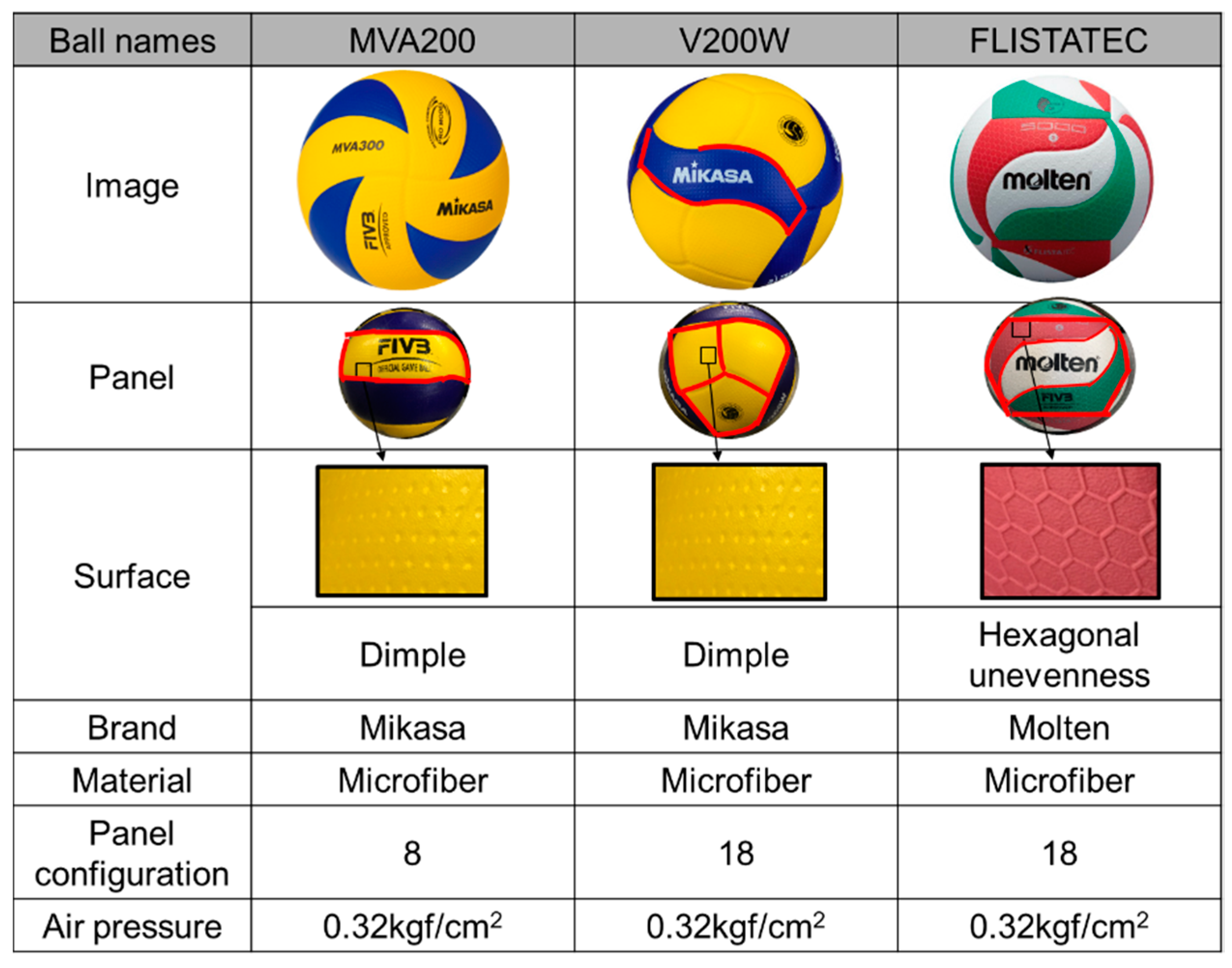
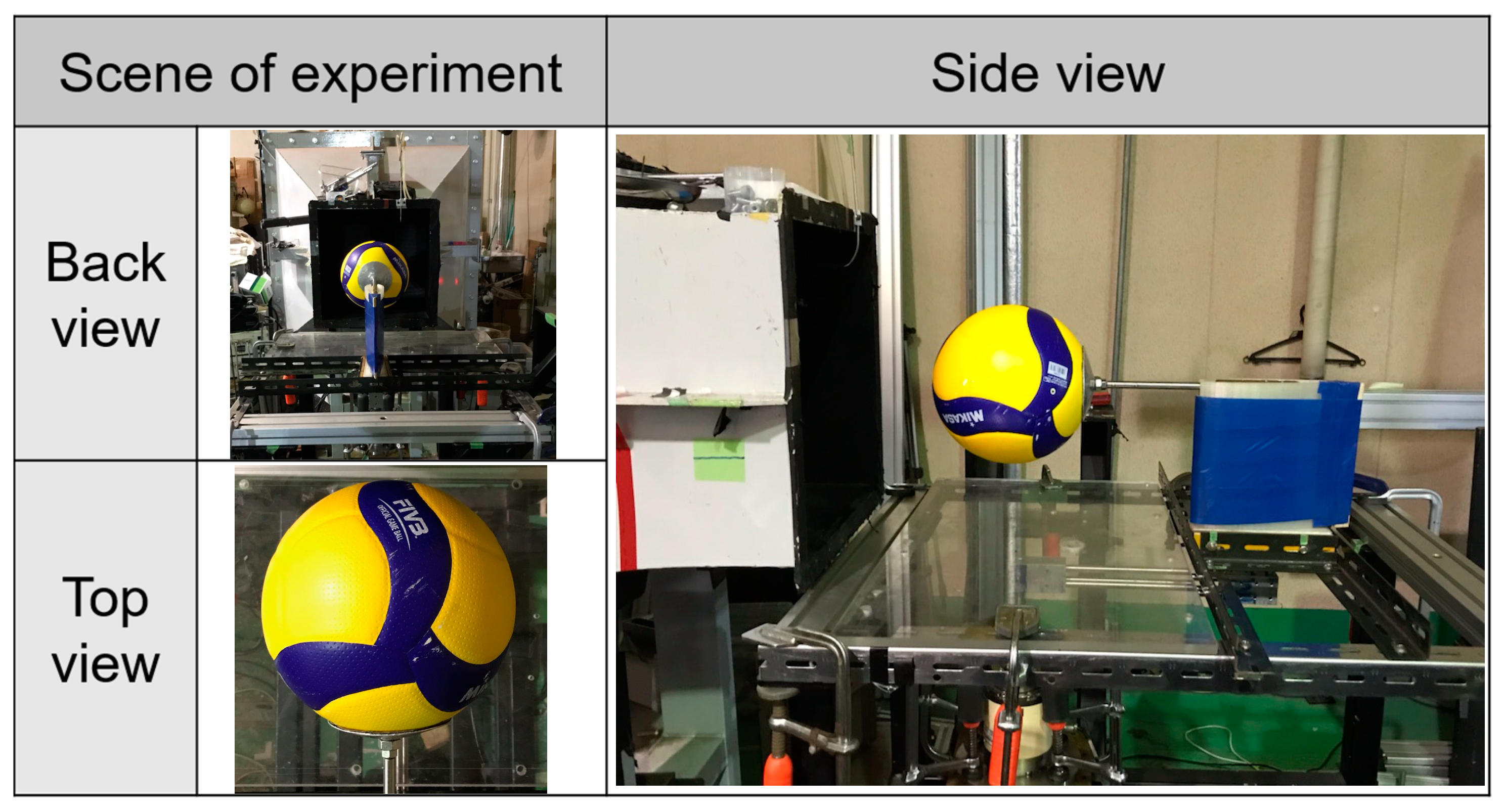
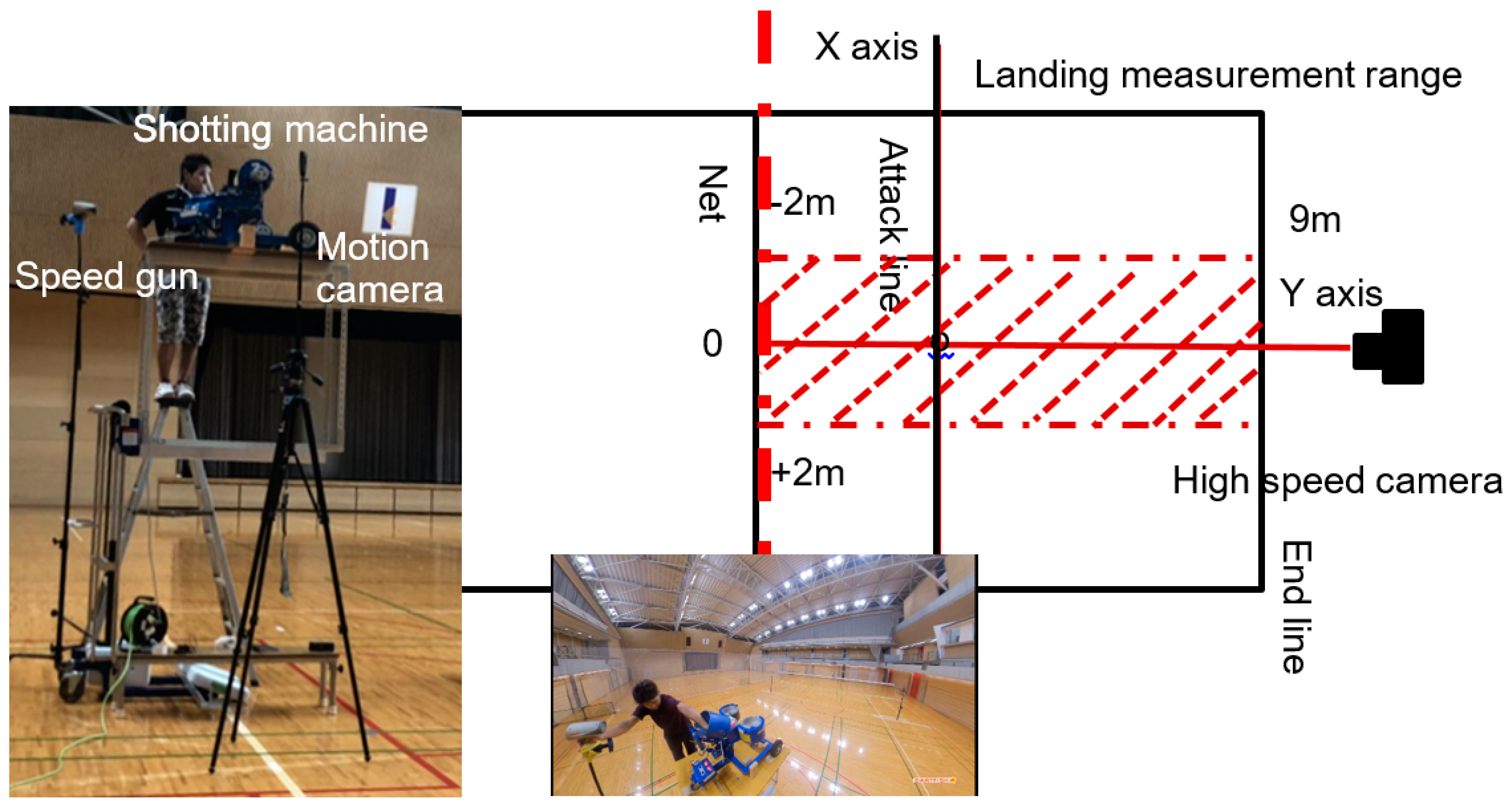
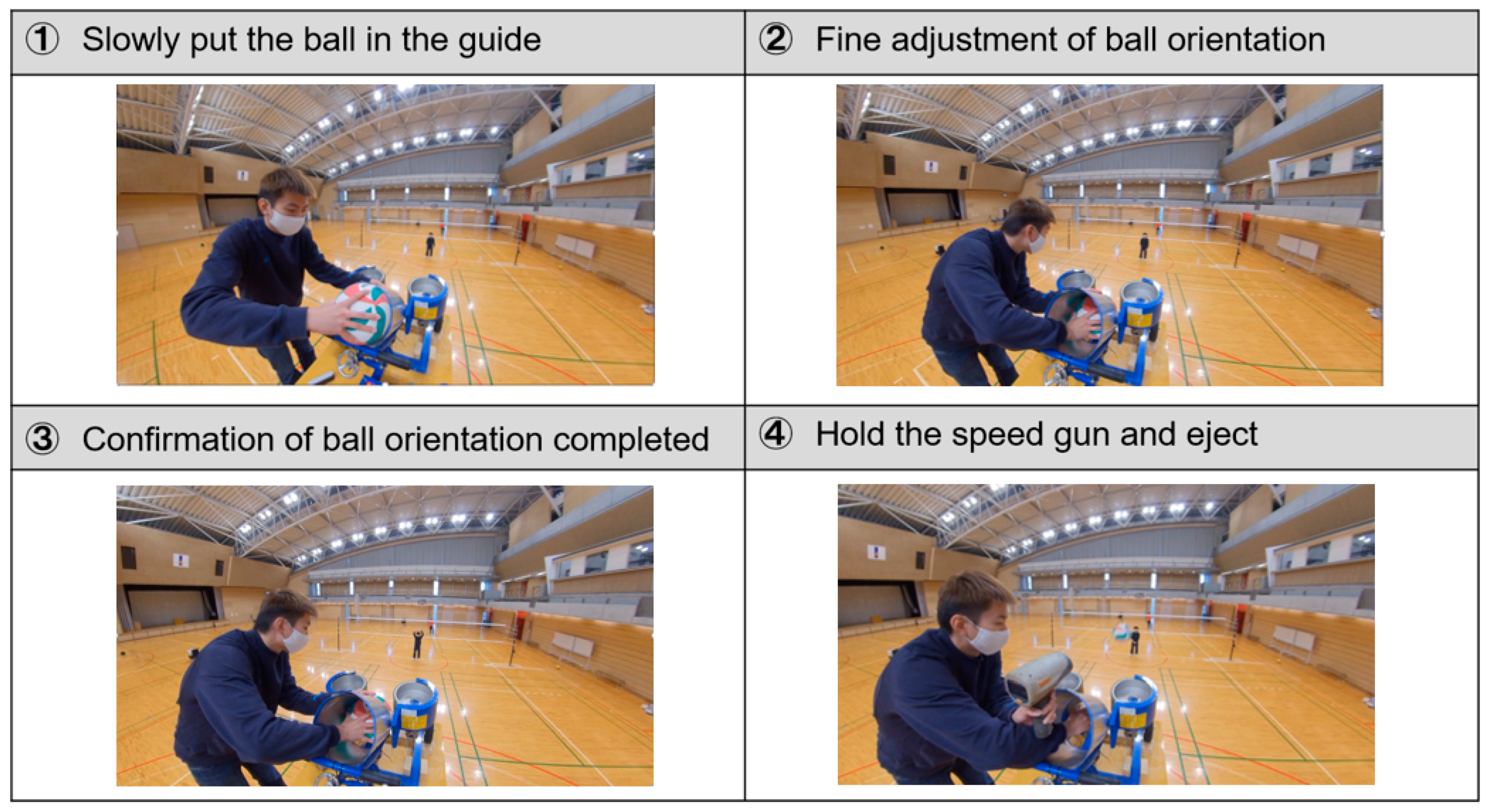
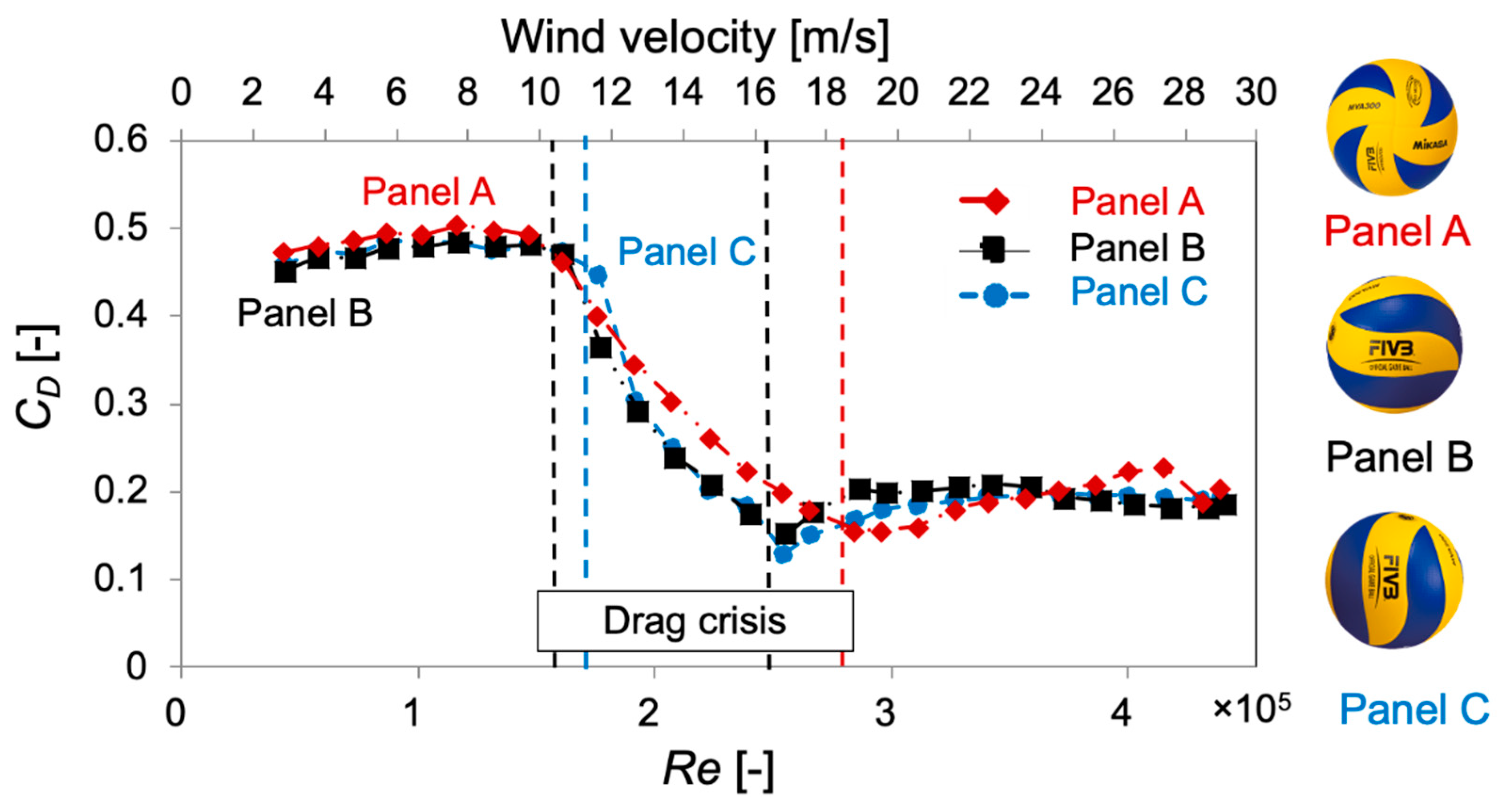
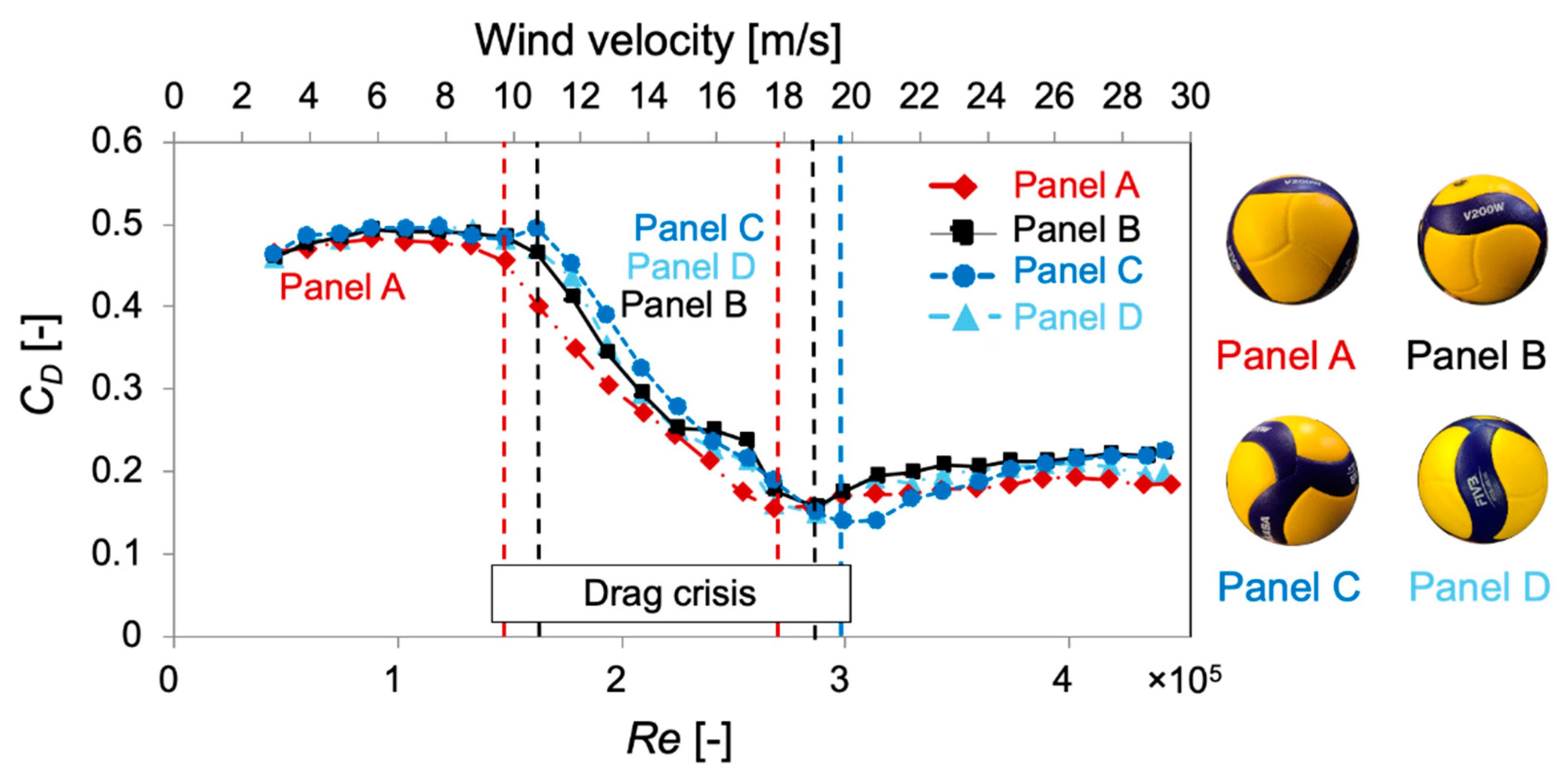

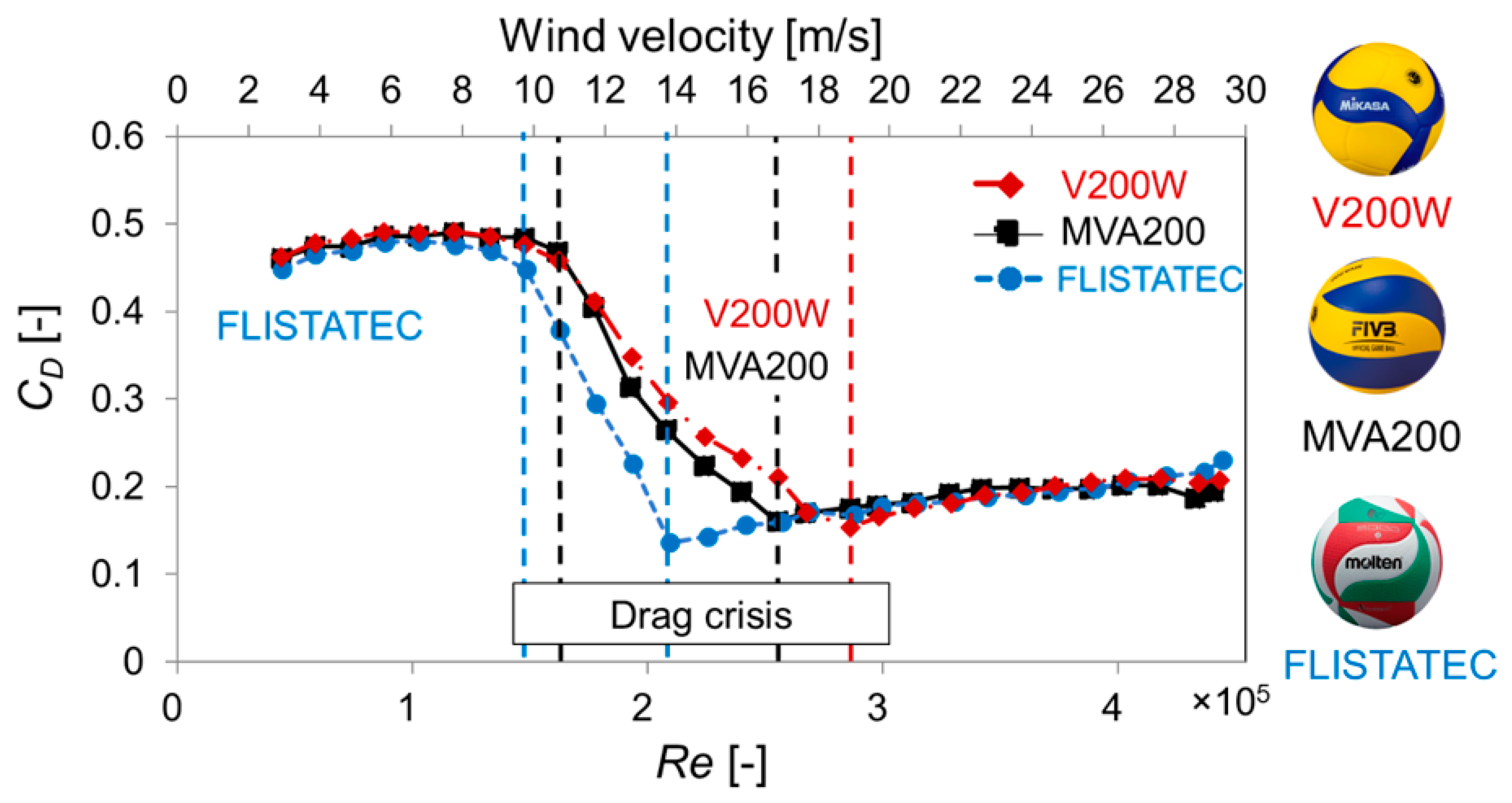
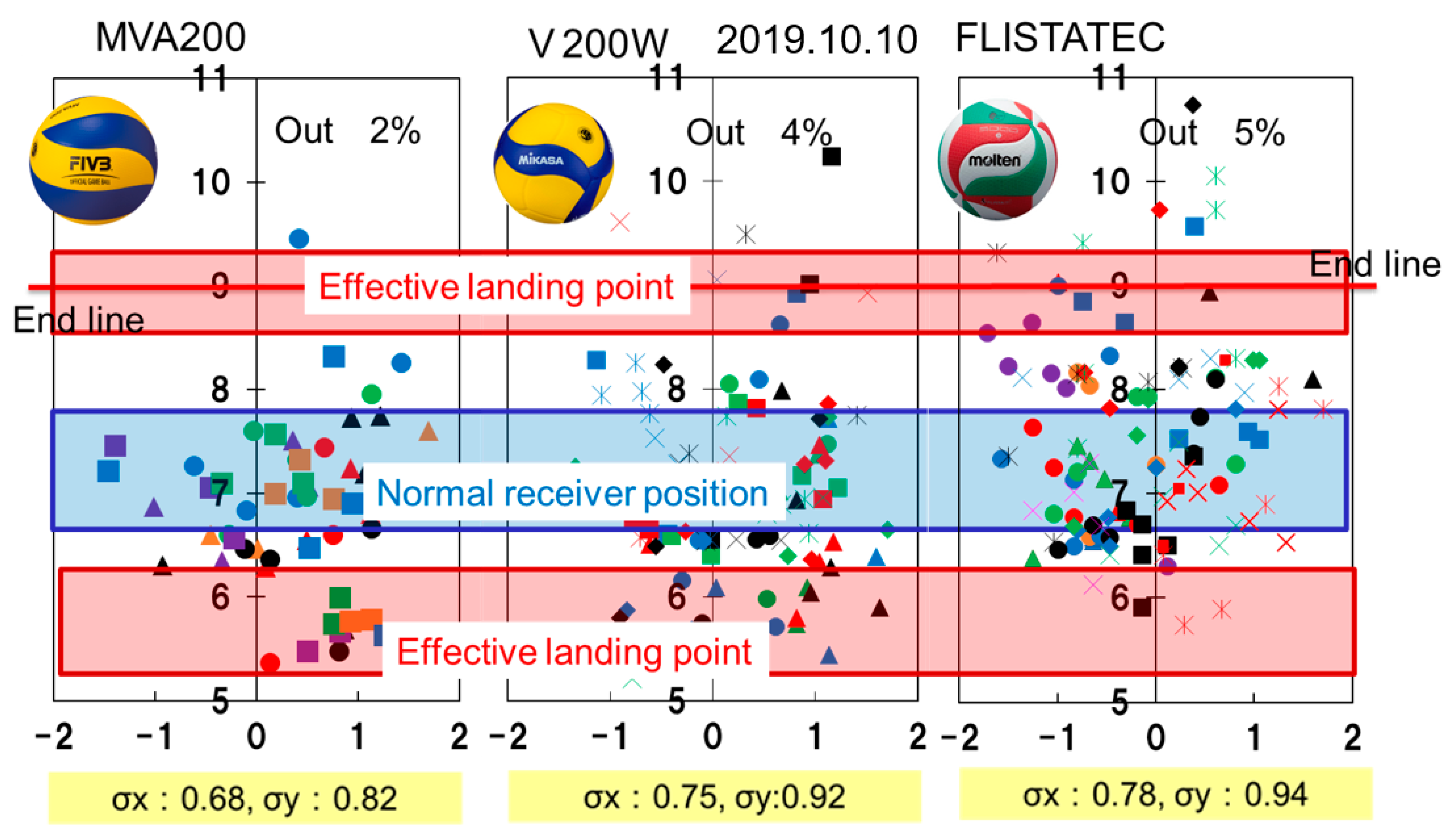

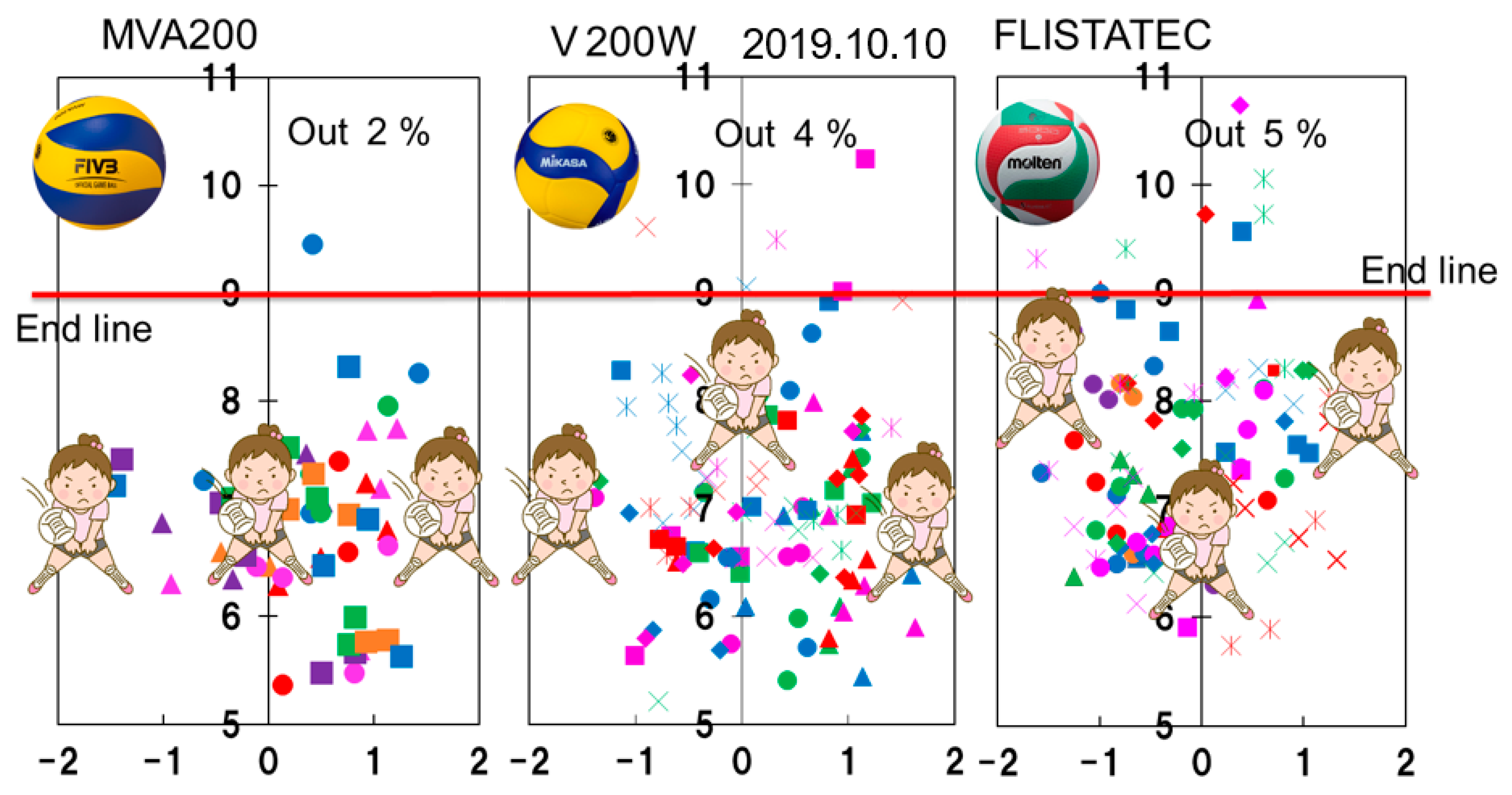
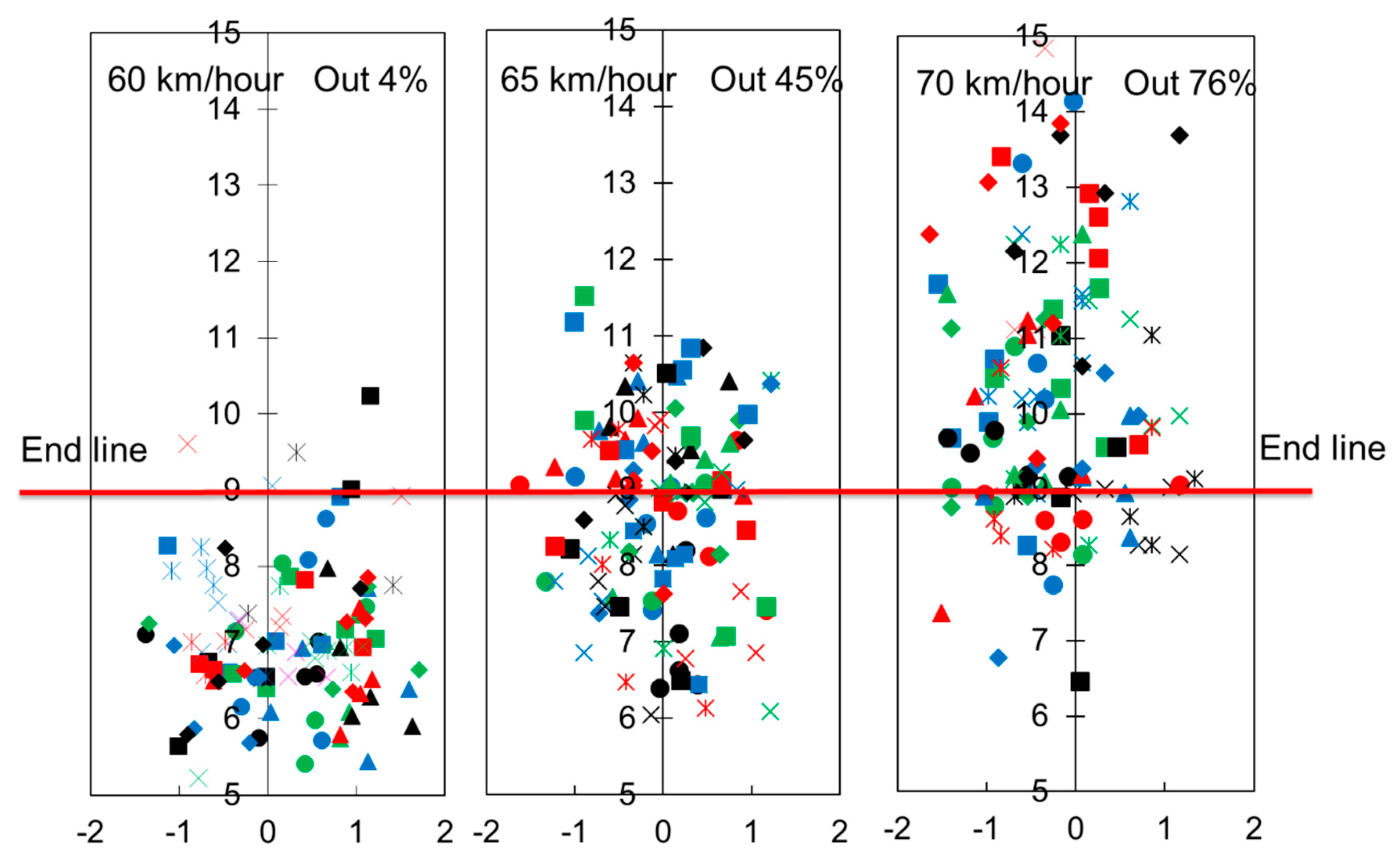
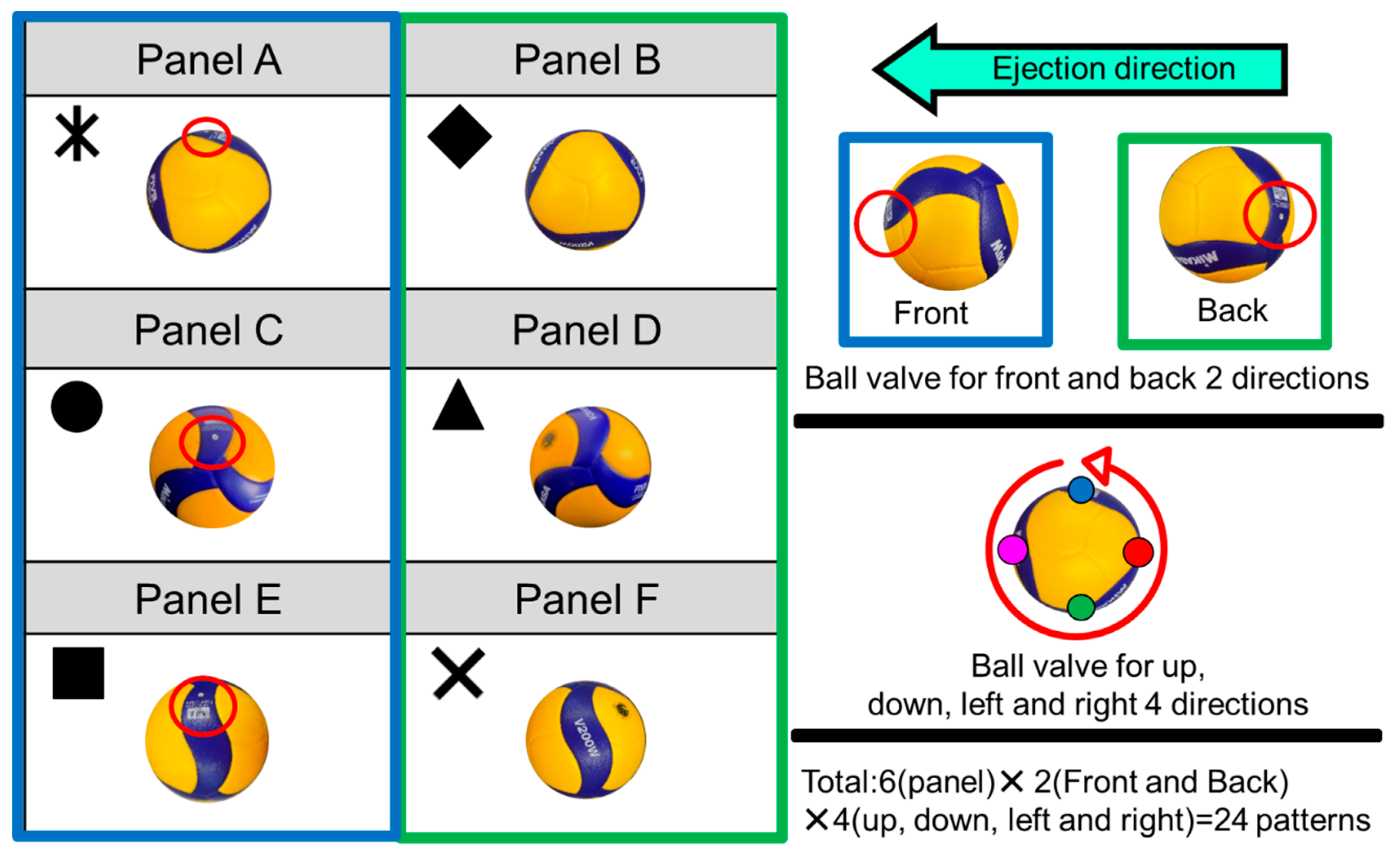
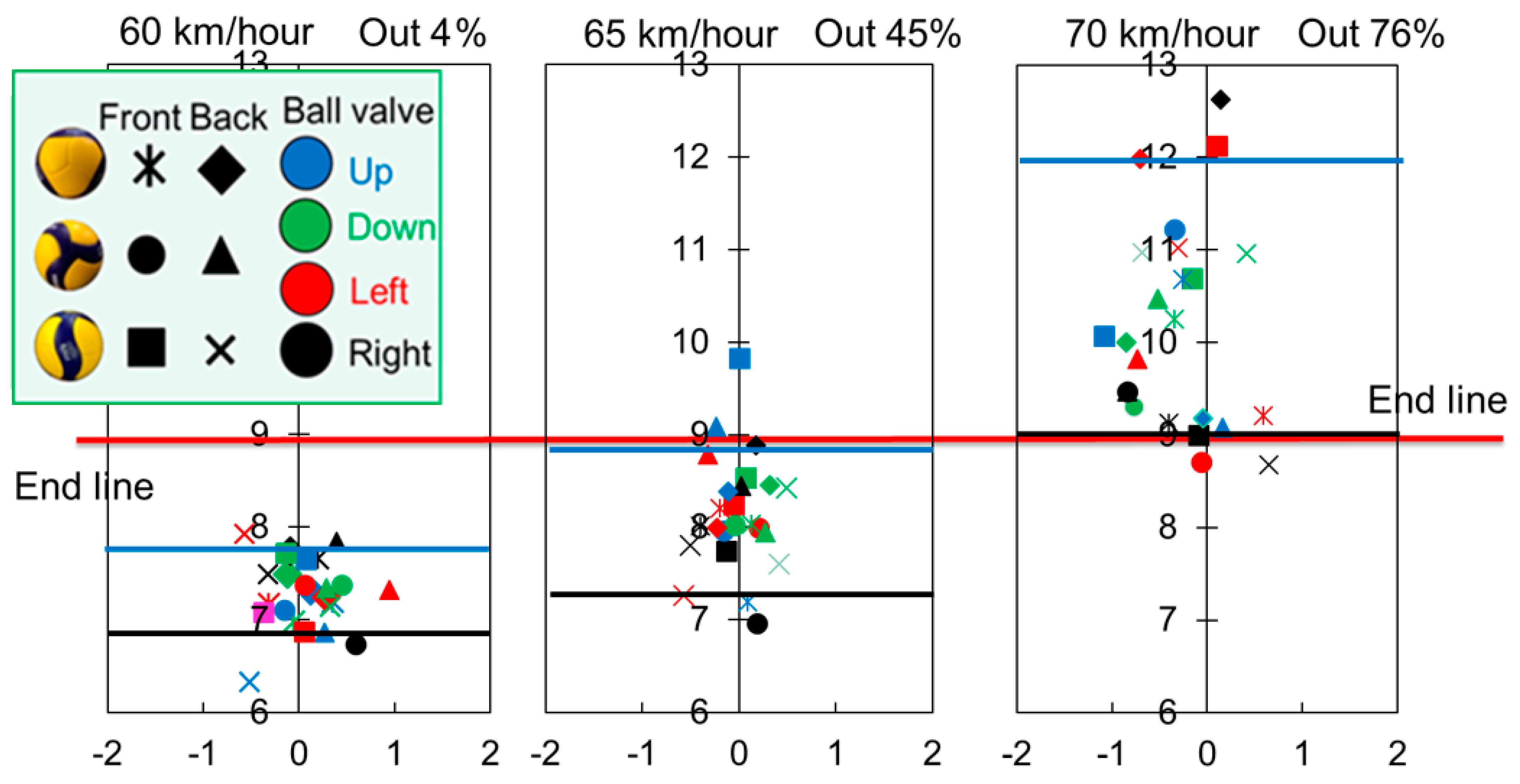
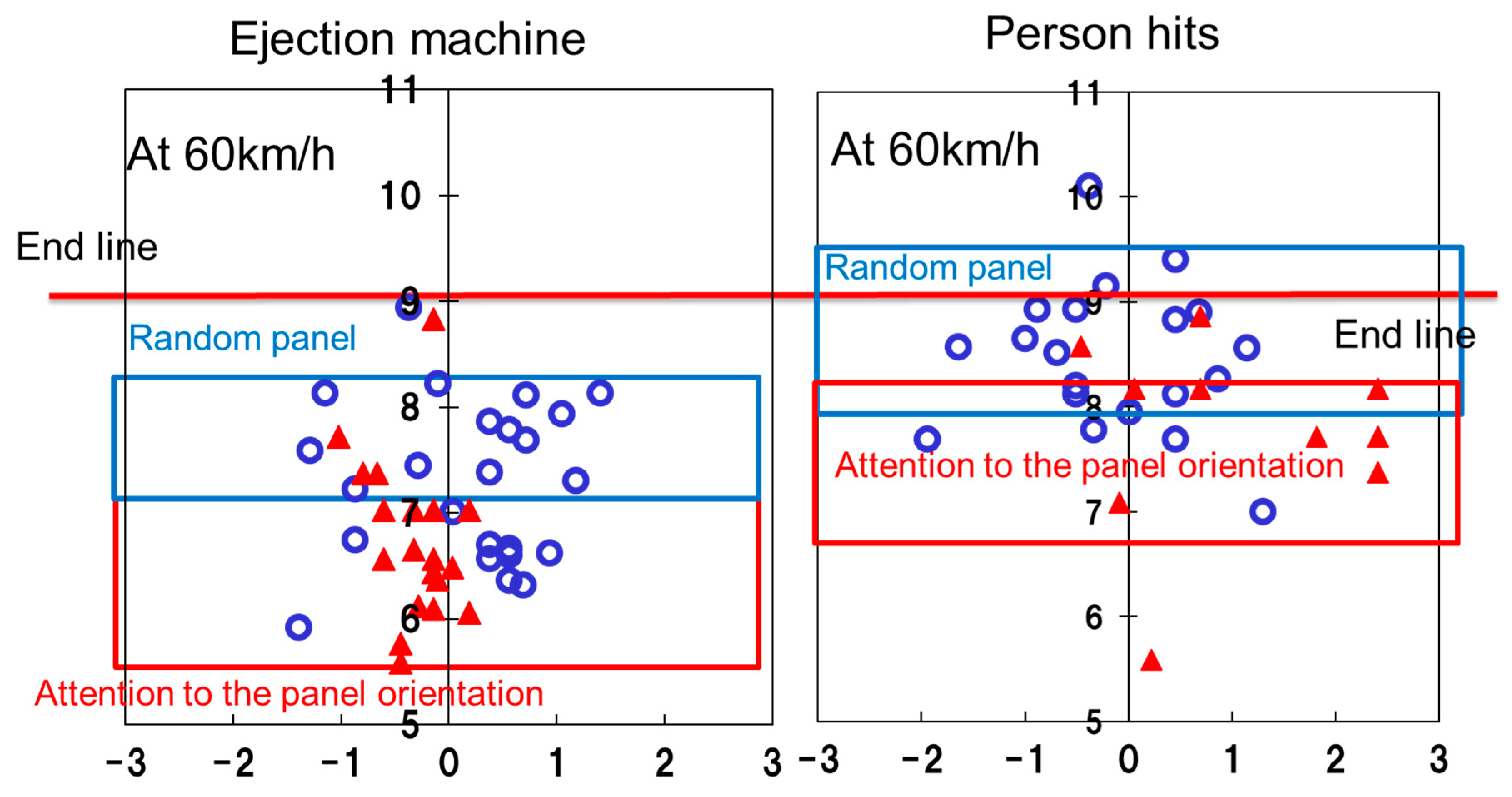
Publisher’s Note: MDPI stays neutral with regard to jurisdictional claims in published maps and institutional affiliations. |
© 2021 by the authors. Licensee MDPI, Basel, Switzerland. This article is an open access article distributed under the terms and conditions of the Creative Commons Attribution (CC BY) license (https://creativecommons.org/licenses/by/4.0/).
Share and Cite
Tamaru, T.; Hiratsuka, M.; Ito, S. Serve Ball Trajectory Characteristics of Different Volleyballs and Their Causes. Appl. Sci. 2021, 11, 9269. https://doi.org/10.3390/app11199269
Tamaru T, Hiratsuka M, Ito S. Serve Ball Trajectory Characteristics of Different Volleyballs and Their Causes. Applied Sciences. 2021; 11(19):9269. https://doi.org/10.3390/app11199269
Chicago/Turabian StyleTamaru, Takehiro, Masaki Hiratsuka, and Shinichiro Ito. 2021. "Serve Ball Trajectory Characteristics of Different Volleyballs and Their Causes" Applied Sciences 11, no. 19: 9269. https://doi.org/10.3390/app11199269
APA StyleTamaru, T., Hiratsuka, M., & Ito, S. (2021). Serve Ball Trajectory Characteristics of Different Volleyballs and Their Causes. Applied Sciences, 11(19), 9269. https://doi.org/10.3390/app11199269





